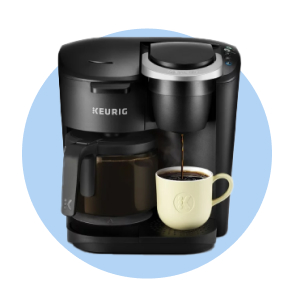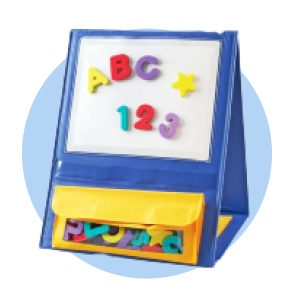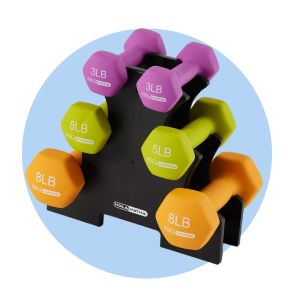
How to Know Which Social Media Platforms Deserve Your Budget
Make social media work for you
Just under 64% of people worldwide use social media, and it directly influences purchasing decisions for 85% of the key Gen Z demographic. With that much power, it isn’t something your business can afford to overlook, but it’s important to balance effectiveness with cost. Here’s how a little planning and the right frame of mind can make your social media budget work overtime for you.
Getting a social media plan together ahead of your store opening? Read “Ready, Set, Retail: Insider Knowledge for Your Brick & Mortar Launch” for more tips.

Step 1: Set goals
A strong social media presence can help you reach new customers and build connections with the ones you already have. It can also help you learn what people think about trends in your industry and your business in particular.
You can use social media to achieve lots of different goals, but it’s best to just focus on one or two at first. Here are a few examples to get you started, along with ways to measure them:
Increasing your reach: Follower count is one good metric, but don’t overlook impressions, which is how many people see your post. If you’ve got lots of impressions, but not that many followers, think about what might be preventing people from clicking that “follow” button.
Building a loyal base: Engagement—which includes all the ways someone can interact with a post, like viewing a video, replying with a comment or leaving a “Like”—is a great indicator of the impact your posts are having on people who see it. If engagement is low, it may be time to shake up your messaging.
Driving sales: If you’d like to bring in clients or paying customers, focus on conversions. Use tracking links to see how many people visit your site from your social media posts and consider using each platform’s e-commerce tools for direct sales. Not getting the revenue you’d hoped for? That might be your signal to rethink your strategy or even switch to a different social media platform.
Elevating your social media is one way to build a better business. Here are 10 more.

Step 2: Determine demographics
Before you decide which platforms to focus on, take some time to understand how they fit with your customers. You probably already know a lot about the people who use your business: how old they are, how much money they make, where they live and so on. This is also a good time to learn about the demographics of any new customer groups you want to attract.
Once you have your audience demographics in hand, compare that to the demographics of the top social media platforms. For instance, Facebook is one of the most-used platforms in the U.S., but its audience tends to skew more toward middle-aged and older users. Meanwhile, Pinterest is used by 51% of American women but only 19% of American men. Target the platforms most likely to attract not just your existing customer base, but any new groups you’re trying to influence.
Find more ways to diversify your audience in our handy guide for small business owners.
Step 3: Choose platforms
Now that you know what you want to accomplish and who you want to reach, it’s time to decide which social media platforms are the best fit. Keep in mind that different age groups tend to gravitate towards different platforms. Remember that demographic information we talked about in the previous section? Use that to as your guide for designing your social media mix.
Think of your social media spending like an investment portfolio: you want to invest more where the best chance for growth is, but you also want to diversify enough that one option underperforming doesn’t send the whole campaign into a tailspin.
YouTube
Eighty-five percent of American adults use YouTube, which makes it an effective way to reach just about anybody. Posting there can take more time and money than on other platforms, though. Videos that are at least eight minutes long tend to perform better, and creating high-quality videos of that length takes time and effort. Think about your current expertise and budget before committing to a YouTube strategy.
Facebook is one of the best-established social media platforms, and it offers numerous ways to reach audiences: posts built around text, still images, video and live broadcasts are common. It’s also very popular, which means there’s plenty of competition for users’ attention, so you’ll need a strong strategy to make an impact.
Instagram is a visual-first social media platform. Though it was initially defined by still photography, it now also incorporates a great deal of short-form video. If you’ve got eye-catching products or visually distinct branding that translates well to photographs, consider showing it off on Insta.
Pinterest is built around the concept of collecting and sharing inspiration. Users post DIY hacks, recipes, mood boards and much more. Brands with an aspirational message that can meet the visual variety demanded by Pinterest users may have a better shot at success.
TikTok
TikTok serves users a rapid-fire stream of short-form videos. Its algorithm-powered “For You” page is infamous for keeping users saying, “Just one more.” If your business can capitalize on TikTok’s trend power without blurring your message or identity, it may be a great fit.
Step 4: Plan your strategy
You’ve done your homework. You know the kind of content you want to make and the best place to post it. Now, it’s time to decide how to spend your social media budget. Here are some more pieces to consider as you get started:
Create a steady stream of posts: A social media profile that’s full of old branding, never updated and never responds to users may be worse than none at all. If you create an account, be prepared to commit to it.
Which platform(s) to use: You don’t have to choose a single platform—and probably shouldn’t! Trying different strategies on different platforms will help you figure out what works best for you and your audience. Just don’t overextend yourself and try to do everything, everywhere, all at once.
What to promote: Each of the social media platforms we’ve mentioned includes options for paid ads or promoted posts. Paying to promote your posts will make sure people see them, but those costs can add up fast. The right mix of paid and organic (unpaid) will help you reach your goals without overspending.
Find your path to success
Social media can be a powerful tool in your marketing mix—one of many. Browse the Walmart Business content hub today to find more marketing tips, financial guides and even more practical advice to add even more tools to your marketing kit.
Looking for more ways to grow? Sign up for Walmart Business. You’ll get low prices and bulk buys on must-haves for the workplace, as well as free curbside pickup on orders $35 and up.1 Become a Walmart Business+ member to unlock free shipping with no order minimum2 and to earn 2% back in Walmart Business Rewards on orders $250 or more.3


Limited-time offer
Unlock your special promo code
Stay informed on Walmart Business news & get $20 off a $100 purchase!1
1Minimum order of $100. Promo code can be used one time & may not be combined with other offers. Offer not transferable & void where prohibited by law. Customer responsible for all applicable taxes. Offer expires 12/31/2025 at 11:59pm PT. Further restrictions apply. See terms at checkout for details. Promo code offers available in limited quantities. While supplies last.
1 Restrictions apply.
2 Excludes most Marketplace items, freight and certain location surcharges.
3 Rewards can only be used toward future purchases on Walmart Business. Additional terms apply.
Exciting news awaits
Hear firsthand about new products, features & promotions.
By clicking submit, you agree to receive emails about Walmart Business and acknowledge you have read and agreed to our Terms of use and Privacy Policy.











